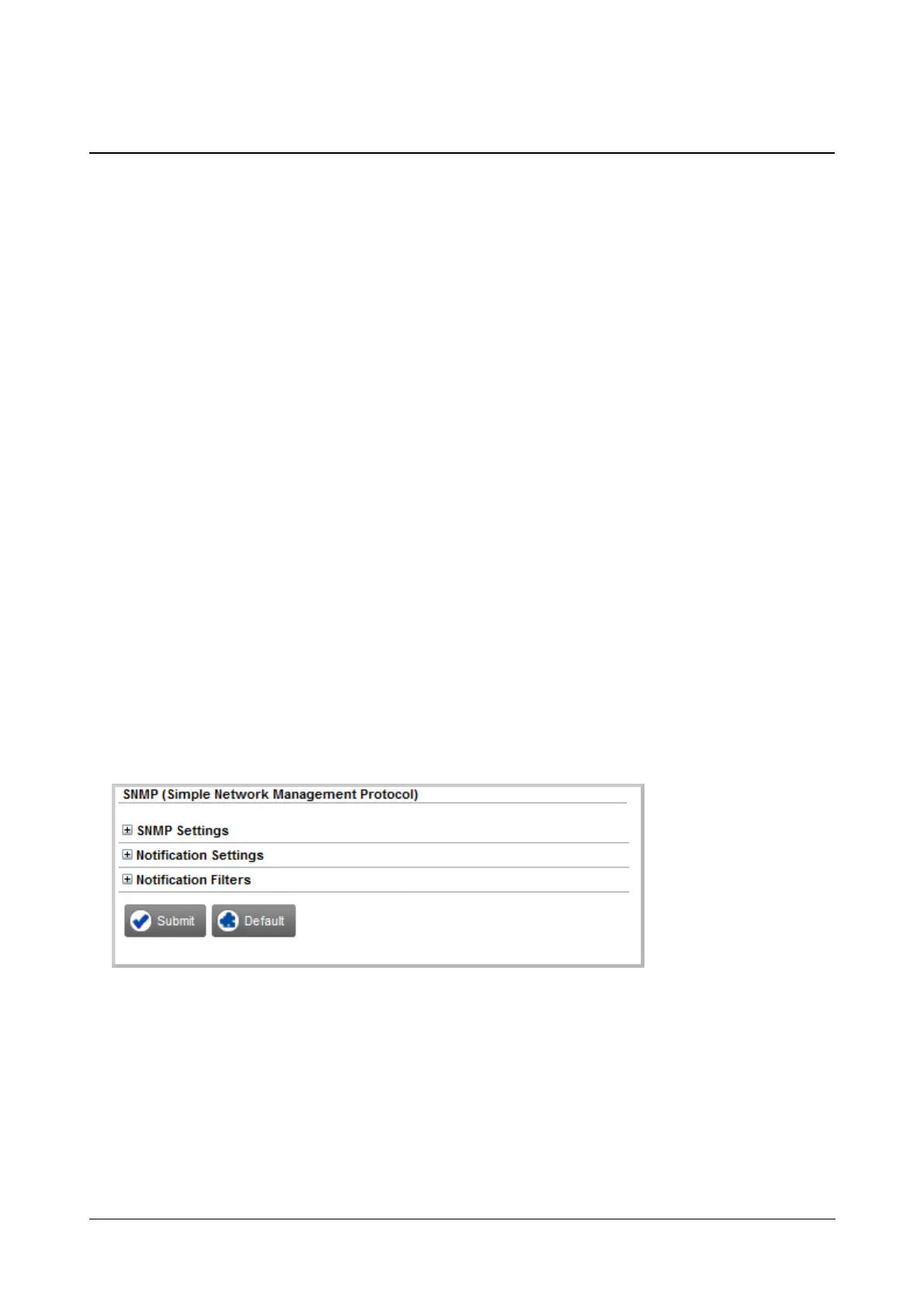Matrix SETU VFXTH System Manual 240
Simple Network Management Protocol (SNMP)
Simple Network Management Protocol (SNMP) is an application-layer protocol used for exchanging management
information between network devices. Using SNMP, you can manage and monitor network elements, audit network
usage, detect network faults or inappropriate network access.
The SNMP architecture consists of:
•An SNMP Agent is a program that is bundled within the managed device. SNMP agent allows a managed
device to collect the Management Information Base from the device and make it available to the SNMP
Manager on request. It receives SNMP requests and generates SNMP responses or notifications (traps/
informs). The SNMP Agents are SNMP Servers.
• SNMP Manager, usually the Network Management Station. The manager communicates with multiple
SNMP Agents implemented in the network. It generates SNMP requests and receives SNMP responses
and notifications (traps/informs). The SNMP Manager is an SNMP Client.
• Managed device or the network element is a part of the network that requires some form of monitoring
and management. For example, switch, routers, servers.
• Management Information Base is the commonly shared database between the Agent and the Manager.
SNMP uses UDP (User Datagram Protocol) as the transport protocol for passing information between Managers
and Agents. The Agent listens on UDP port 161 for requests from Manager and the Manager listens on UDP port
162 for notification from Agent.
To configure SNMP parameters,
• Log into Jeeves.
• Under Maintenance, click the SNMP link.
